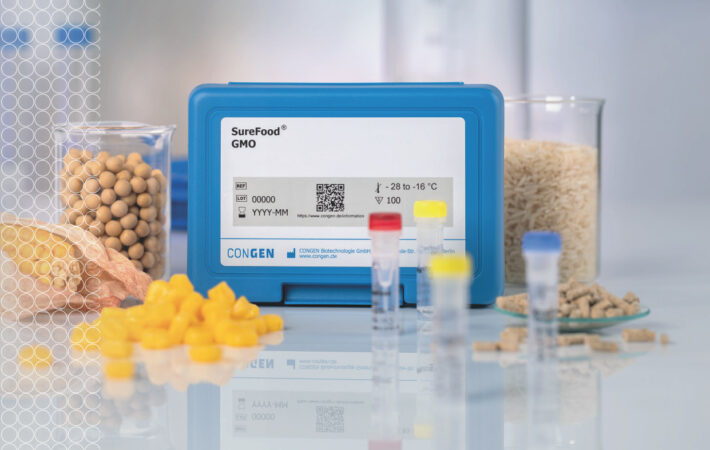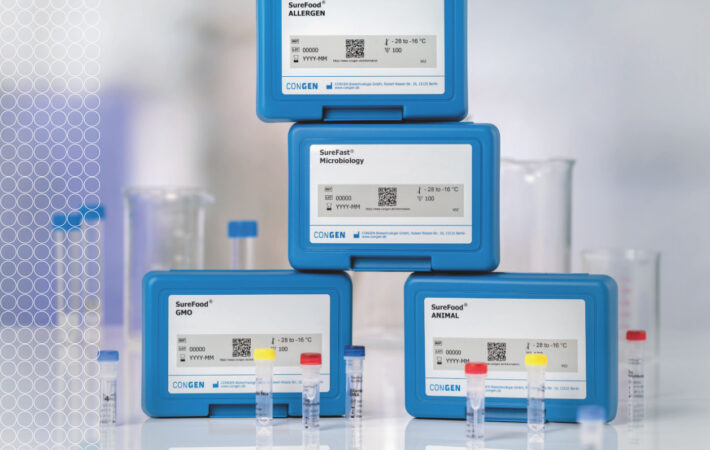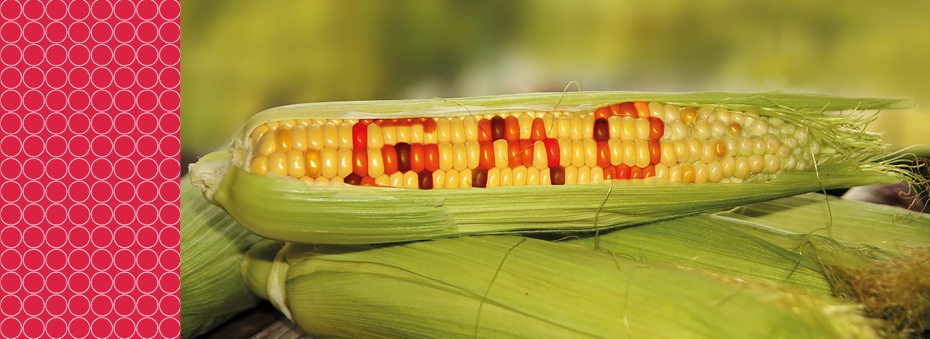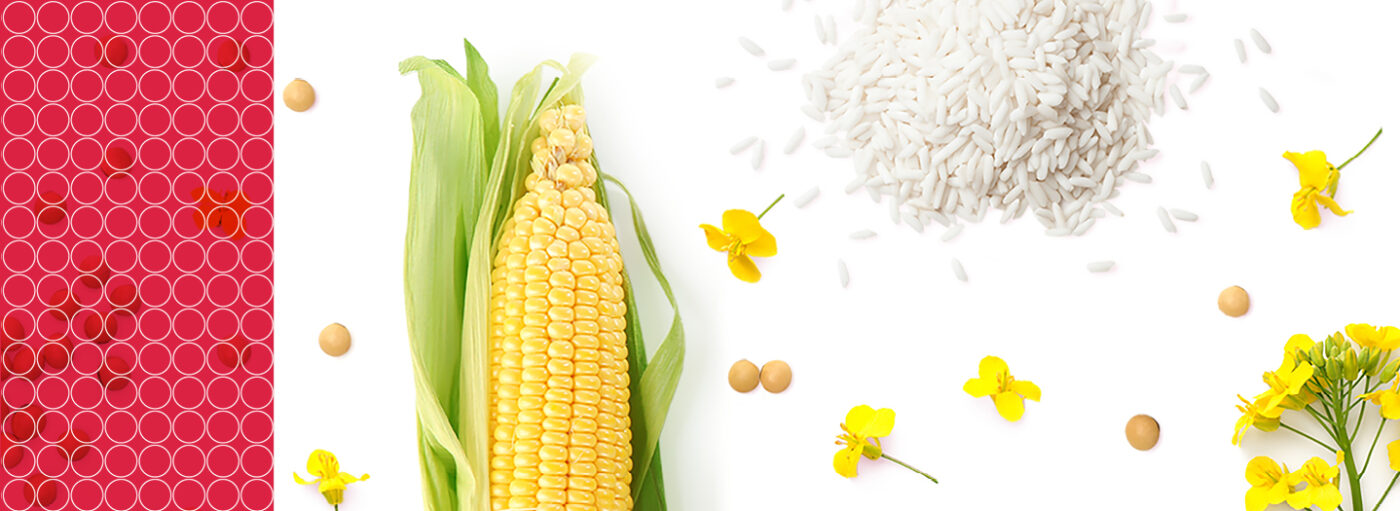
Genetically modified organisms
Innovative solutions for the detection of GMO in food
Genetically modified organisms
Common genetically modified plants
Genetically modified organisms (GMOs) commonly include soy, maize, rapeseed, and cotton (not used as food).
Labelling of GMO-free food
According to the Council of Ministers of the European Union (EU), all food products containing genetically modified organisms must be labeled, as per Decision No. 1139/98/EC. Additionally, EU Directive 1829/2003 sets the labeling threshold value at 0.9% for both food and feed in the EU.
GMO analysis according to VLOG
For detailed information on VLOG requirements and recommended analytics, please refer to our flyer.
Qualitative GMO detection
National or regional regulations often enforce zero tolerance for non-approved GMO events, necessitating qualitative tests. These tests typically have a detection limit of 0.01%, depending on the matrix and application. Regulation EC 619/2011 applies specifically to animal feeds, allowing a technical threshold value of 0.1% for non-approved GMO events under certain conditions (e.g., expired EU approval, country of origin approval, availability of tests and reference materials).
This is crucial for managing contamination in imports of GMOs and GMO-free maize and soy.
Quantitative GMO detection
For approved GMO events, the quantitative assessment determines whether the product exceeds defined threshold or mandatory labeling values. In Europe, a value of 0.9% applies to the GMO event in the respective plant matrix.
Below this threshold, foodstuffs with technically unavoidable and coincidental GMO contaminations do not need to be declared (EC 2829/2003 and EC 2830/EC). Quantification involves measuring a GMO-specific gene and a plant matrix-specific gene, using a calibration curve derived from a DNA standard. This method calculates the percentage of GMO presence.
GMO screening
Screening for plant extrinsic gene sequences introduced during GMO development efficiently detects the presence of any GMOs.
Typically used gene sequences include:
The efficiency of the DNA preparation can be verified with a plant-specific PLANT Plus Kit (S2049).
SureFood® GMO PLANT PLUS, Art. No. S2049
SureFood® GMO PLANT 4plex Corn/Soya/Canola/Cotton, Art. No. S2156
SureFood® GMO PLANT 4plex Corn/Soya/Canola + IAC, Art. No. S2158
A screening of plant extrinsic gene sequences, introduced during GMO development, provides evidence of the presence of possible GMOs. The commonly used gene sequences include 35S, NOS, FMV, BAR, and CTP2:CTP4 EPSPS. These sequences and further parameters can be combined modularly or used individually.
SureFood® GMO SCREEN 4plex 35S/NOS/FMV/IAC, Art. No. S2126
SureFood® GMO SCREEN 4plex BAR/NPTII/PAT/CTP2:CP4 EPSPS, Art No. S2127
SureFood® GMO SCREEN 4plex BAR/PAT/CrylAb/IAc/CTP2:CP4 EPSPS, Art. No. S2128
SureFood® GMO SCREEN P35S:BAR Rice, Art. No. S2022
The multiplex approach, combined with standardized PCR setup and analysis, enables a streamlined and efficient identification process.
SureFood® GMO Identification Kits
Soya:
SureFood® GMO ID 4plex Soya I, Art. No. S2161
SureFood® GMO ID 4plex Soya II, Art. No. S2162
SureFood® GMO ID 4plex Soya III, Art. No. S2164
Corn:
SureFood® GMO ID 4plex Corn I, Art. No. S2170
Canola:
SureFood® GMO ID 4plex Canola I, Art. No. S2166
SureFood® GMO ID 4plex Canola II, Art. No. S2167
Quantification is carried out via the respective quantification of a GMO-specific gene and a plant matrix-specific gene using distinct calibration curves. This process converts the number of GMO plant/matrix DNA copies into a dimensionless unit, which is then multiplied by 100 to yield the percentage value. The calibration curve is created through the dilution of a DNA standard, and a defined GMO material can be precisely specified with an experimental correction factor.
SureFood® GMO Quantification Kits
Soya:
SureFood® GMO QUANT RR2Y Soya, Art. No. S2029
SureFood® GMO QUANT 35S Soya, Art. No. S2028
SureFood® GMO QUANT RoundUp Ready Soya, Art. No. S2014
Corn:
SureFood® GMO QUANT Bt176 Corn, Art. No. S2015
SureFood® GMO QUANT Bt11 Corn, Art. No. S2016
SureFood® GMO QUANT Mon810 Corn, Art. No. S2019
SureFood® GMO QUANT MON863 Corn, Art. No. S2051
SureFood® GMO QUANT MIR162 Corn, Art. No. S2135
SureFood® GMO QUANT T25 Corn, Art. No. S2017
SureFood® GMO QUANT 35S Corn, Art. No. S2020
These and further parameters can either be combined in a modular way or used individually. The efficiency of the DNA preparation can be verified with a plant-specific PLANT Plus Kit (S2049).
The SureFood® system is highly flexible, consisting of modules for amplification and detection that are compatible and configurable for specific user needs. All modules are compatible. SureFood® is available as both a product and a service.
SureFood® GMO product overview
For a comprehensive overview of our SureFood® GMO test kits, please refer to our free brochure.




